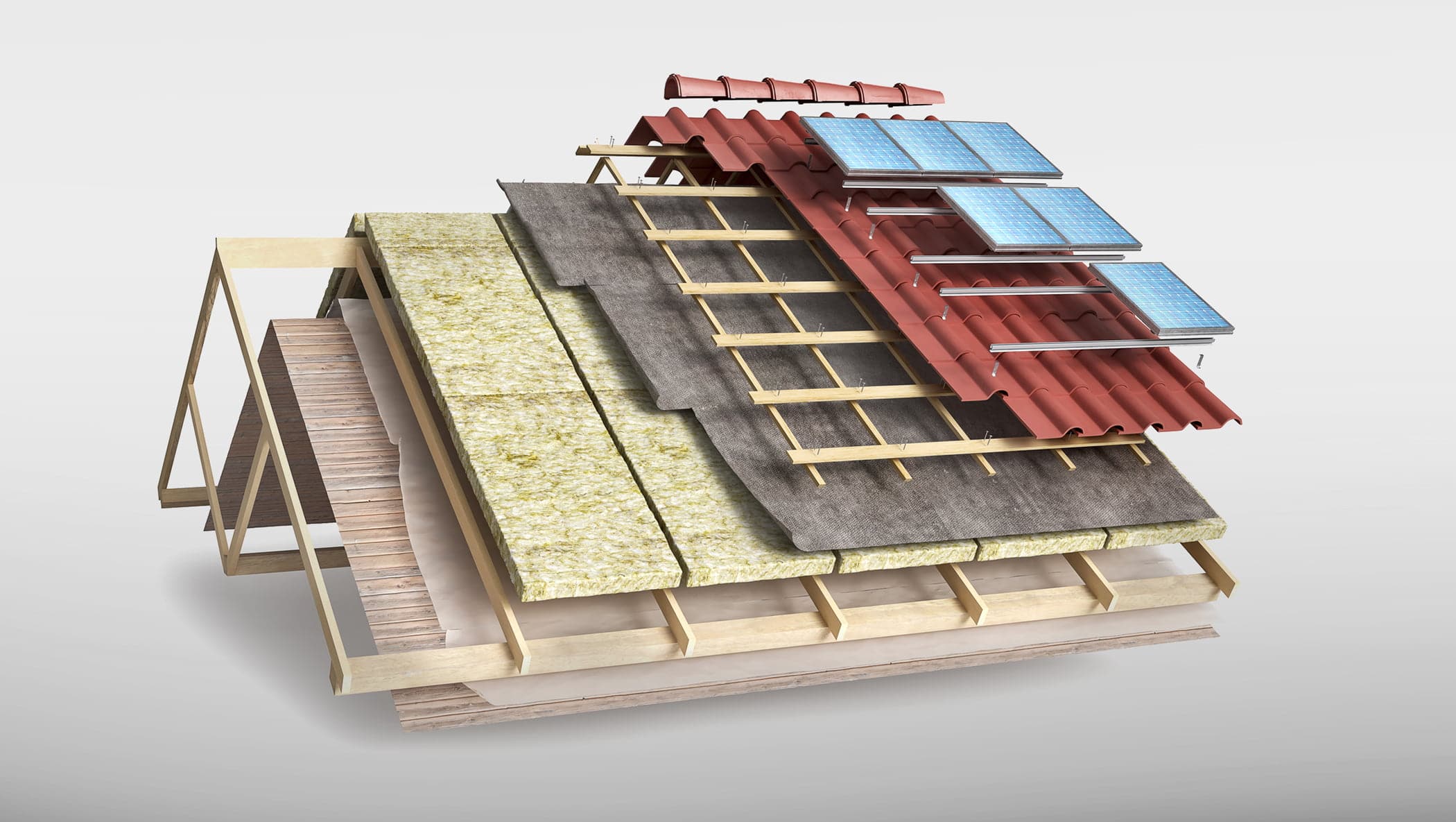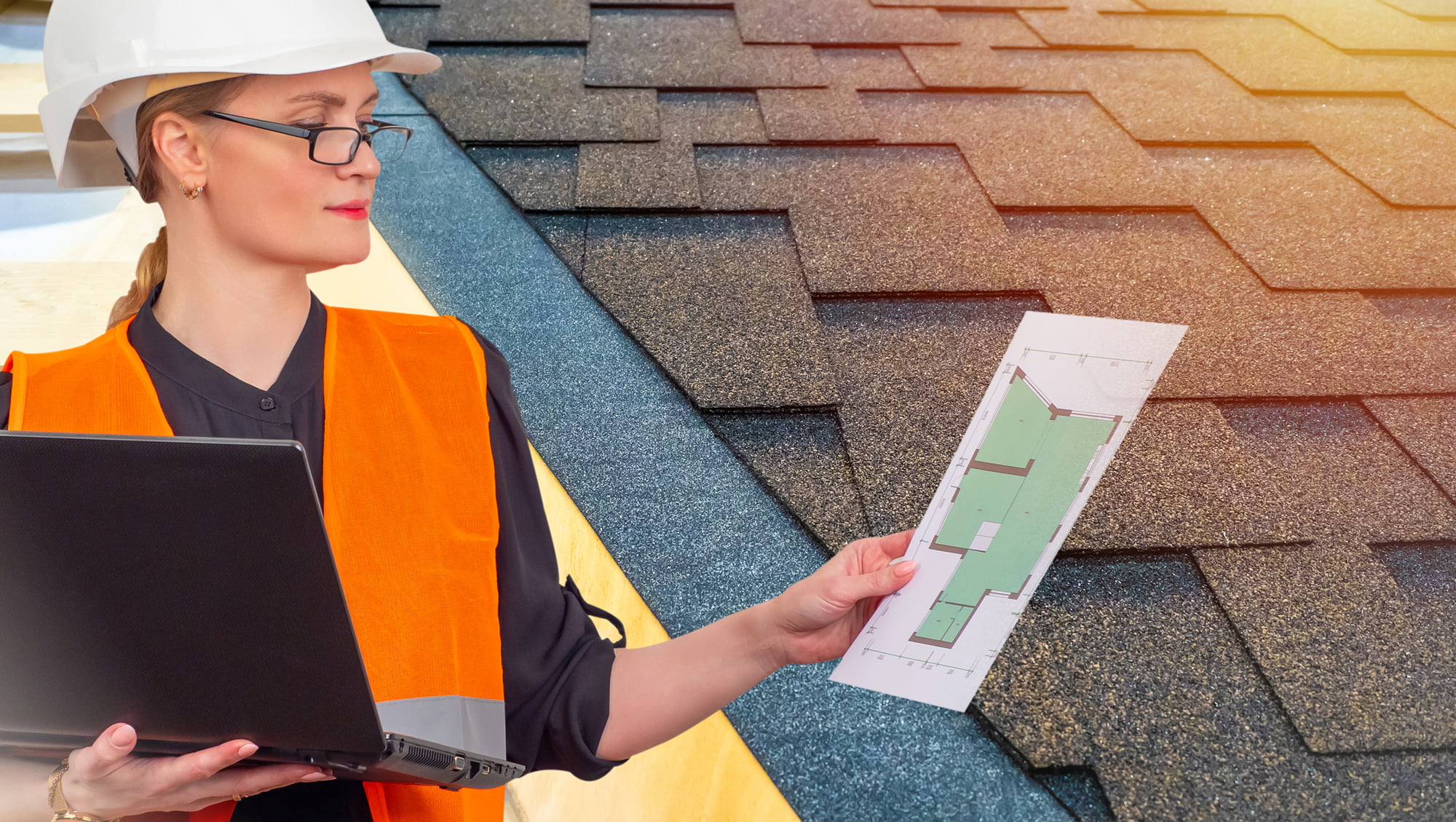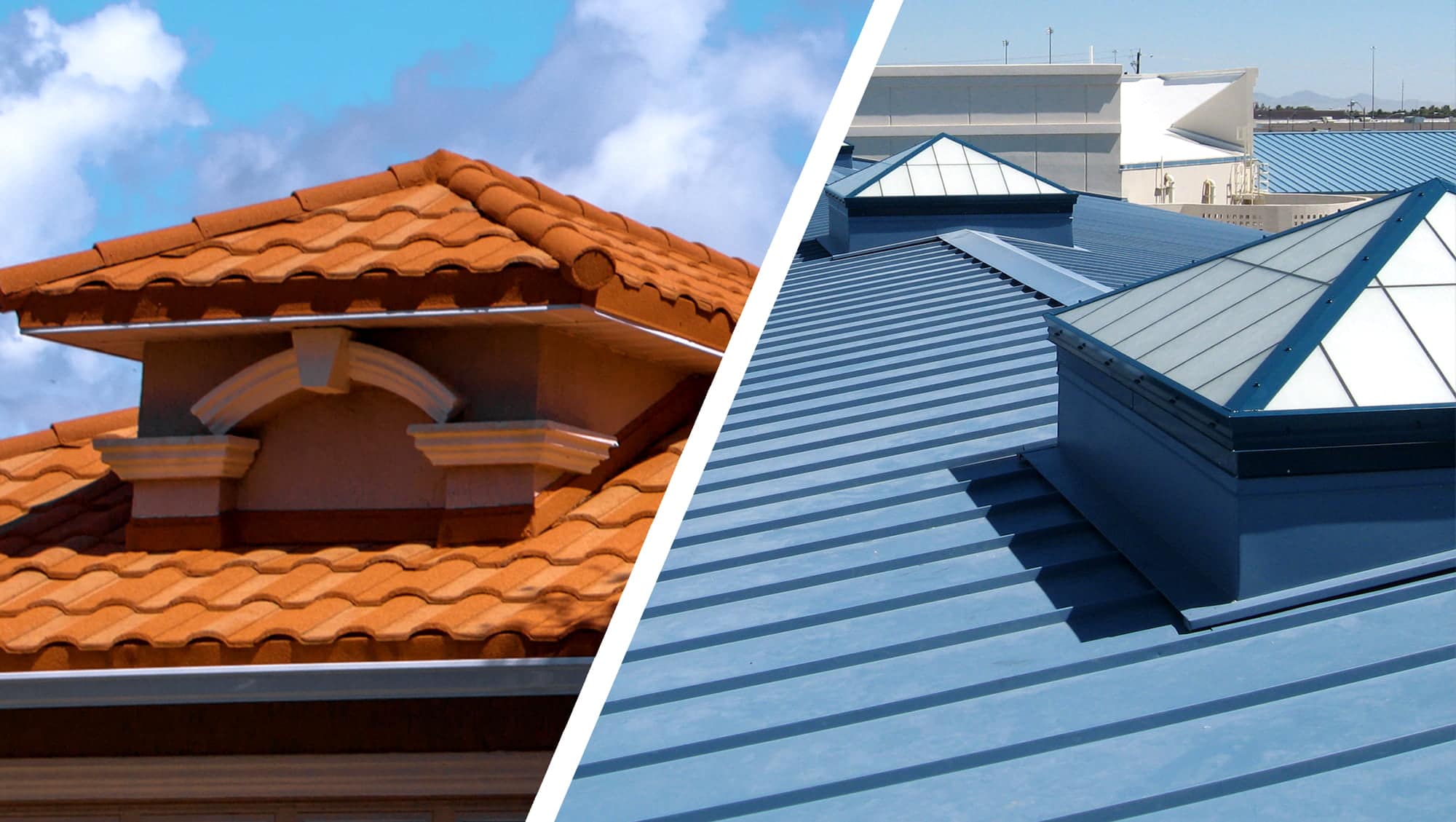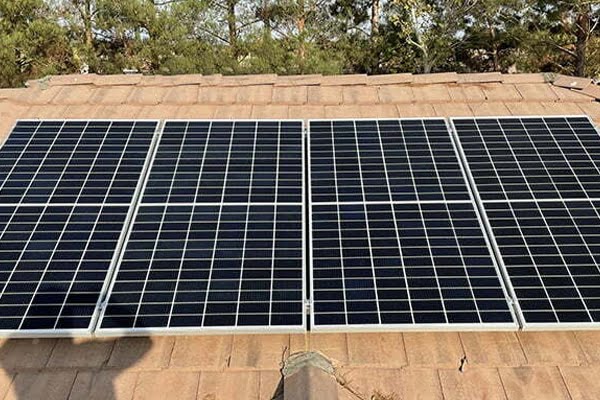The roof is the most extensive segment of your house. Identifying the roof parts and understanding roof functions is invaluable. It will help you better understand roof problems in the future and explain them to a roofing specialist.
Moreover, the roof is an essential part of your home’s safety. It preserves your home from rain, snow, and wind. At some point in life, all homeowners come across the need to replace the roof. The best period for roof replacement is from March to September when the sun will help you better bond the shingles.
So, first, let’s understand what roofing is and what are principal components of it.
What Is A Roof Made Of?
The roof layers protect your home and give it a structure. The primary roof components are the shingles. The main purpose of roofing shingles is to protect the roof sheathing in case of bad weather. The heavier and thicker the shingles are, the more resistant they are to temperature. Roof shingles are made of various materials, including wood, metal, asphalt, plastic, slate, stone, and ceramic.

Underlayment is a water-resistant material laid over the sheathing and plastic sheet to protect it against rain or snow. Underlayment also offers fire resistance.
Another component of the roof preventing water damage is the flashing. Flashing is a thin sheet, mostly composed of metal. It is installed on top of the roof system joints around any vertical roof surface, including the chimney, skylights, plumbing vents.
Roof sheathing, also known as roof decking, is a thin piece of wood (0.5 inches) covering the entire roof frame. It is the component that attaches to the rafters.
Rafters are the skeleton for your roof. It is framing for the roof on top of your house. Rafters support the sheathing and shingles and are made of wood or metal.
A roof drainage system is used to divert water and debris off the roof. It is a design feature that easily removes the water from the top.
Common Roof Design Elements
Identifying roof design elements is the next step in understanding the roof components and roof system design.
The roof is not one structure. It is a combination of different elements and systems to protect your home. Hence, expressing the aesthetics of your roof, pick the right pieces.
The ridge is the top or peak of the roof, where roof planes (the roof surface) meet. It is the most outstanding part of your roof. You may have also heard about the trim, which protects the roof’s seam along a ridge or hip ( the part where the roof faces connect).
The valley is the roof area where two sections meet and slope down.
The gable is a usually triangular portion of the wall between the edges of roof pitches. It extends from the eaves to the roof’s peak.
Dormers are sections of the home designed to bring in natural light to an attic or high floors. Dormers extrude from the roof and are similar to miniature roofs.
The roof edge ( or eaves edge) is the board running along the edge of the roof. It is also called a fascia.
The pitch is the slope of the roof. Nowadays, in modern homes, are popular low-pitched roofs or flat roofs.
Lost in certain roof elements? Recognizing the roof parts is valuable, and a professional roofing company specialist is always available to support you in understanding the design and the square footage.
Choosing Your Material
Nowadays, there is a variety of roofing materials available in the roofing industry. Each material generally has individual durability and comes with a different warranty.
Roofing is the fundamental element of your home, so it is vital to research the market before making the final decision. Today, you can even attain energy-efficient and eco-friendly roofs.
Your roofing material choice should depend on your case, considering whether you need residential or commercial roofing. Plus, account for the fact of fire resistance. Metal roofing, clay tiles, and asphalt shingles are the highest resistant ones.

Tips For Estimating Roof Shingles
Roofing is a significant investment. So, always choose the best roofing shingles for your roof replacement to avoid unnecessary expenses in the future.
When estimating your roof shingles, you should weigh a few factors.
- When your roof was installed or replaced
Or if it is the original roof or it has already been replaced? Depending on your roof shingles’ age and type, you should know that it can leak or need a replacement for another reason. Some shingles may endure up to 30 years.
- What type of shingles you have
The material your shingles are made of can impact their permanence. Besides, the weather conditions will strongly affect your shingles, depending on their type.
To estimate how many roof shingles you need, you should know your roof’s surface’s total square footage. It is not that difficult to determine. You need to measure the length and width of each plane on the roof, including dormers. Next, multiply the width and length to get the square footage of each plane. In the end, you should calculate the total square footage of your roof by adding the square footage of each of the planes. In case you install a new roof, you will also need underlayment.
Of course, it is always better to hire a professional roofing company to help you with calculations and advice. Plus, you can get a free estimation from roofing companies.
Residential And Commercial Roofing
There is a difference between residential roofing and commercial roofing. However, both require quality materials and proper installation by a professional roofing company in the market.

Commercial and residential roofing vary in design, roof type, and cost. Residential roofing tends to be easy to install. In contrast, commercial roofing requires qualified roofing assistance considering the building’s airflow system and external piping. Commercial roofing is an essential part of your business concerning your time and money. Commercial roofs are more substantial than residential roofs. They are also more expensive due to the square footage and materials required for roof installation and maintenance.
Each roofing type has its advantages and disadvantages. Your choice should meet your requirements, your building’s location, and, of course, weather conditions.
As an experienced and licensed roofing company, LA Solar Group recommends preventive maintenance for your total home roofing to prolong its life, good appearance, and security.
Author of a publication: Irene Abgaryan





